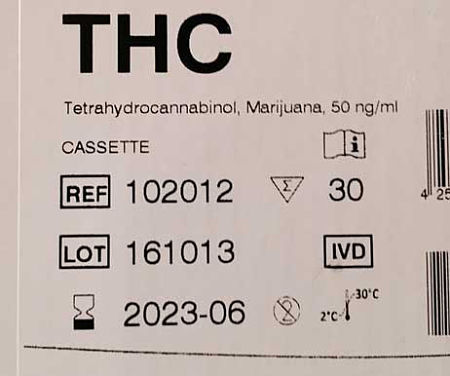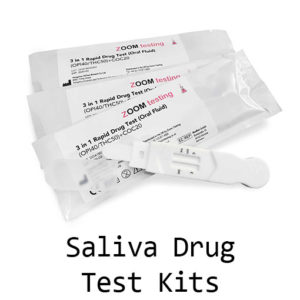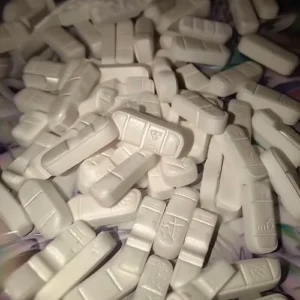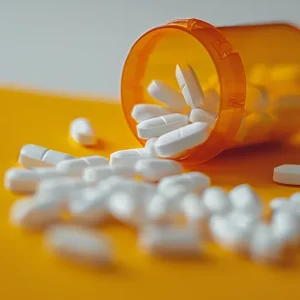Cannabis is one of the most commonly screened for substances in UK drug testing. Virtually every pre-employment drug test will screen for cannabis. Today’s cannabis drug tests are accurate and will have a predetermined cut-off. The drug testing cut-off level is one of the most important aspects when it comes to testing for drugs. This is the level or threshold which determines if the test is negative or positive.
A drug’s concentration expressed in nanograms (ng) per milliliters (mL). This is usually abbreviated as ng/mL. A nanogram is a tiny unit equal roughly to one billionth of a gramme. 1mL is approx. 1/30 of a US fluid ounce.
After a person has smoke or ingested cannabis, they will have traces of the drug in their body for hours, days or even weeks, depending on how much and how often they use the drug. How long cannabis stays in your system will also be a big determinant in the passing or failing of a drug test at the predetermined cut-off levels.
Deciding Drug Cut-Off Levels
When we look at drugs that are abused the cut-off levels are set to test at the lowest level that still keeps the integrity of the test you’re conducting. This testing window is optimised and it allows for the detection of the drug which is being screened for.
Drug Cut-Off Levels for Cannabis
The cut-off levels for this drug vary. It’s dependent upon the type of test that’s being used. Two common types of tests used in the workplace currently are saliva and urine drug testing. The saliva test has a lower cut-off than the urine type of test.

Urine Drug Test Cut-Off Levels for Cannabis
The active ingredient in cannabis that causes the high is THC. Urine tests for cannabis, however, set out to screen for another chemical called THC-COOH. This metabolite is produced when THC is broken down in the liver. THC-COOH stays in the body much longer than THC.
The standard cutoff level for THC-COOH used by drug test manufacturers is 50 ng/mL. Less frequently some tests may test at 20 ng/mL and 100 ng/mL.
In the UK, 50 ng/ml is generally the standard drug test cut-off for cannabis. This is used in any workplace screening that involves a urine test. Our urine drug testing kits all use the 50 ng/ml cut-off. Our 5 drug, 7 drug and 12 drug test kits, multi- parameter drug test kits, and single drug testing kits all use the cut-off level too. The detection window for cannabis when using a urine drug test is 3 to 5 days from the last use of the drug.
Saliva Drug Test Cut-Off Levels for Cannabis
There’s a lower cut-off for saliva drug tests when compared to a urine drug test. There’s a lower window of detection with a saliva test which is about 24 hours. The saliva drug test is usually used in situations where recent drug use or impairment is under monitoring.
Saliva drug tests will sometimes be designed to screen for Delta-9 THC in saliva to 50 ng/ml cut off, as advised by SAMHSA .Our 13 panel saliva drug test kit is a good example of such a test. On other types of saliva drug test kit, the cut-off for saliva tests for cannabis is 12 ng/ml which is standard for our 4 parameter saliva drug test kit and our 7 parameter saliva drug test kit.
Drug Driving Test Cut-Off Levels for Cannabis
In March 2015, new drug driving legislation was introduced, making it illegal to drive a vehicle whilst under the influence of any of a list of 17 legal and illegal drugs. Cannabis is one of the drugs that is prohibited under the new rules and the cut-off level for the drug is very low. Delta-9-Tetrahydrocannabinol (cannabis and cannabinol) has a cut-off of 2µg/L
Police use a special device, often called a “drugalyser” to take a roadside saliva swab which will determine if a driver is or isn’t over the drug drive limit. South Yorkshire Police have posted this YouTube video which shows how a drug driving test works.
Testing Accuracy and Reliability
One concern that many people have about drug testing is how accurate and reliable the tests really are. With cut-off levels being set so low, even small amounts of a drug can trigger a positive test result. This has led some to question whether the tests may be overly sensitive and prone to false positives.
However, when properly conducted by certified laboratories, the immunoassay screening tests used for workplace drug testing typically have very high accuracy. The initial screening test is designed to be very sensitive, but any positive is then confirmed using a more specific gas chromatography/mass spectrometry (GC/MS) or liquid chromatography/mass spectrometry (LC/MS) test. This two-step process ensures that the chance of false positive results is extremely low.
Studies have found the accuracy rate of laboratory-based drug testing to be about 98-99% when proper procedures are followed. However, accuracy can be lower in field testing situations where testing is not performed in a controlled lab environment.
State-by-State Cutoff Variations in the US
While the UK has standardized cutoff levels for workplace drug testing, there is more variability in the United States from state to state. Some states such as California permit medical and recreational cannabis use, and have adopted higher cutoff levels for workplace testing.
For example, California’s cutoff level for urine testing is 50 ng/mL for initial screening and 15 ng/mL for confirmation testing. Other states range anywhere from 20 ng/mL up to 100 ng/mL. So cutoff levels can differ significantly depending on the state in which the testing is performed.
These state-by-state differences have created challenges for employers with staff in multiple locations. Some have opted to use the federally regulated cutoff of 50 ng/mL across all states to simplify and standardize testing. But this can result in failed tests for employees who legally used cannabis in their state.
Testing for Impairment vs Past Use
One debate around cannabis drug testing cutoff levels is whether the goal should be detecting any past use, or only current impairment on the job. Critics argue that urine testing in particular can detect cannabis long after any impairing effects have worn off.
Some have advocated for on-site saliva or breath testing which would provide evidence of recent use and likely impairment. Cutoff levels could potentially be adjusted higher to avoid positive tests from occasional off-work usage.
However, many employers argue that any cannabis use violates their drug-free workplace rules, impaired or not. So the debate continues around finding cutoff levels that balance workplace safety, employee rights, and state cannabis laws. More research is still needed on correlating cutoff levels with actual impairment and crash risk.
Effects on Workplace Safety
Ultimately, the goal of workplace drug testing is to promote safety by deterring drug use and identifying workers who may be impaired on the job. Proponents argue that maintaining low cutoff levels is necessary to achieve this.
Positive tests can indicate off-work usage that could spill over to on-the-job impairment, or an emerging drug problem before it becomes a workplace safety issue. However, opponents counter that low cutoffs predominantly identify off-work use that does not affect job performance.
More research is still needed, but one study found no increase in workplace accidents in U.S. states that legalized medical cannabis, despite presumably more off-work usage. This suggests there may be room to increase cutoffs without impacting safety.
A nuanced approach considering job type and duties may yield better outcomes. For example, higher cutoffs for workers operating heavy machinery vs desk jobs. But any changes would likely require attitudes towards cannabis to continue evolving, even in the workplace.
Conclusion
In summary, while UK cutoff levels are relatively uniform, the ongoing changes around cannabis laws and social attitudes have led to debates in some countries about whether current testing cutoffs are appropriate. Research is still progressing, and cutoff policies will likely continue adapting. The goal remains balancing safety, rights, and fairness for both employers and workers.
Photo by manish panghal on Unsplash
Zoom Testing is a leading UK drug testing company and a supplier of Drug Test Kits.






